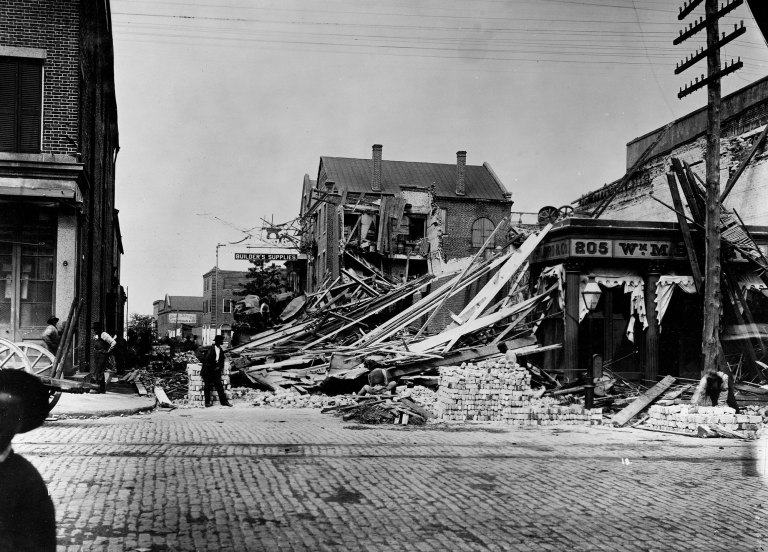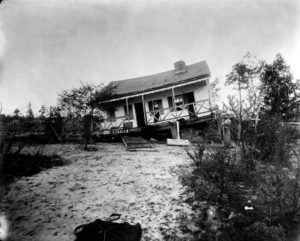
By Samantha Connors | A bill introduced last February by Summerville Republican Rep. Gil Gatch would require insurance providers to offer earthquake insurance coverage on all policies issued in the state. The insurer would also be required to cover loss or damage to the policyholder’s property. But since it was introduced, it has sat in committee.
Earthquakes have been on people’s minds this year as the Midlands region recorded 12 small shakes since the beginning of the year. Since Dec. 27, the state has been rocked by 19 earthquakes. Typically, South Carolina experiences five to 15 per year.
Gatch’s bill, H. 3981, could have a significant impact on South Carolina residents. Earthquake insurance is not currently included in standard homeowner’s insurance.

Gatch told Statehouse Report the bill hasn’t moved since last February because other more pressing issues are currently taking precedent, including medical marijuana and bills on critical race theory.
“There are a lot of other issues that people want to address right now,” he said. “I know that [H. 3981] is something leadership is aware of. We’re just trying to knock out more important issues first, but we will address it.”
Earthquake policies revisited last in 2010
According to the S.C. Emergency Management Division (SCEMD)’s Earthquake Guide, 70 percent of earthquakes in the state center around three areas: Ravenel-Adams Run-Hollywood, Bowman and Middleton-Place-Summerville.
Though earthquake insurance is relatively inexpensive, it often comes with a high deductible, said Dr. Thomas Pratt, a research geophysicist with the U.S. Geological Survey (USGS), making it less feasible for some.
Legislators revisited policies related to earthquakes in 2010 when it adopted new building codes that require structures of a certain size to have a level of seismic resistance.
Though earthquakes are a normal occurrence in South Carolina, many residents are unaware of the state’s annual seismic activity, particularly as people from other areas of the country continue to relocate to South Carolina.
Potential $20 billion impact
The largest East Coast earthquake in recorded history happened on Aug. 31 1886, in Charleston with an epicenter near Summerville. About 100 people died. It destroyed 2,000 buildings and caused $600 million in damage when adjusted for inflation.

More than a century later, the 1886 earthquake remains a notorious piece of South Carolina’s history.
Dr. Norm Levine, a geology and environmental geosciences professor at the College of Charleston, said seismic activity here is normal. He explained the seemingly increased prevalence of earthquakes in recent months is partially due to more sensitive seismometers picking up low-magnitude activity, which most people wouldn’t even notice.
Recent quakes in the Midlands have been minor, all measuring under 2.5 on the Ritcher scale. In comparison, the 1886 earthquake would have measured a whopping 7.3.
If another 7.3 quake hit one of these areas, an SCEMD study estimates 45,000 casualties, 200,000 displaced people and an economic loss exceeding $20 billion dollars.
Is the state ready to rumble?
Experts believe another quake of the magnitude of the one in 1886 is coming — but not as soon as we think.
College of Charleston professor Vijay Vulava studied evidence of old earthquakes in Charleston’s subsurface and found that 7.0 magnitude events occur about every 500 hundred years, which should leave South Carolina with plenty of time before the next one. However, Levine cautions serious earthquake risks still exist.
“Earthquakes don’t just happen as big ones,” said Levine, who also heads the Lowcountry Hazards Center and the S.C. Earthquake Education and Preparedness Program. “Every 125 to 175 years South Carolina might experience something in the 5.0 range. The last 5.0 was in 1910, so we’re sitting in the time zone for something at that level.”
Edgefield was the epicenter of the largest earthquake in recent years when a 4.1 magnitude quake hit in 2014, causing significant shaking but was not strong enough to cause serious structural damage.
A quake of a 7.0 magnitude might be hundreds of years away, but a seismic event in the 5.0 range or stronger is a real threat that could cause liquefaction and more severe structural damage, which begs the question: How prepared is South Carolina?
State preparedness
“We don’t know when the next damaging earthquake will occur, so the only thing you really can do to be prepared is have plans for how to mitigate it afterwards,” said Pratt.
He cites one issue related to earthquakes in the eastern U.S. is the infrequency of these events and the lack of emergency management dollars to plan for one-off occurrences, which leads emergency managers to focus more monetary resources on common events like hurricanes, storm surges and floods.
One could argue that reallocating more state money towards earthquake emergency funding would increase state preparedness, but logistically speaking, it makes little sense to take money away from more pressing issues like hurricanes.

Earthquake response plans and building codes with seismic consideration are two key factors to state preparedness.
SCEMD’s chief of public information Derrec Becker highlighted a few major structures built or retrofitted in recent years to account for potential earthquake damage. In Charleston specifically, the Dock Street Theatre, a historic building considered the “America’s first theater,” retains its historic facade, but beneath the walls lie high-tech, polymesh woven steel to help the building withstand an earthquake.
“The Statehouse was renovated in 1998 and put on pads, cushions for example, to help better withstand the impact of an earthquake,” said Becker. “The back-up dam at Lake Murray in Lexington was built with seismic considerations. A lot of what we’ve done has been those types of things, in addition to making sure residents are aware and prepared as much as they can be.”
In the Charleston area, damage to the Pinopolis or Santee dams poses a potential threat, officials said. Charleston County participates in an annual exercise with Santee Cooper, the state’s utility which owns the Pinopolis Dam, to prepare for a catastrophic event of this nature.
A look at risk models
Based on risk models, the county would have 24 to 48 hours before flood water inundated coastal areas, giving people time to leave, Charleston County EMD director Joe Coates said.
Wood frame structures and buildings with reinforced concrete are the safest in the event of an earthquake. Buildings with brick and masonry veneering are most dangerous as these materials can easily fall off and injure or even kill people in the event of an earthquake.
“We tell people, ‘don’t run outside’ because these brick facades will fall down,” said Pratt. “You don’t want to be running out the door right when the whole wall of bricks falls on top of you. There’s a saying that people don’t die from earthquakes, they die from things falling on them.”
This applies to objects both inside and outside of buildings. In your home, it’s always best to immediately seek cover under a heavy object like a desk or table and be mindful of objects that could fall and hurt someone such as items on bookshelves or on top of kitchen cabinets.
Granting all state residents access to earthquake insurance could mitigate large-scale loss following a major seismic event. Though many experts recommend earthquake insurance, it’s a choice that needs to be considered on an individual basis.
“You have to balance your risk,” said Pratt. “Earthquake insurance tends to have high deductibles, so even though your house is insured if it collapses totally, if the brick facade falls off that might still be under the deductible.”
In the event of a major earthquake in South Carolina, Becker said restoration and inspection of roads, bridges and communication infrastructure would be top priority. Communicating with regional government agencies would also be key to spreading important information and finding ways to bring supplies and medical personnel into impacted areas that may be temporarily cut off.
SCEMD has a specific earthquake plan that is updated every other year, which you can view on SCEMD.org. The state also participates in exercises such as a statewide earthquake drill and earthquake prep week.
Samantha Connors is an editor with the Charleston City Paper, which ran an earlier version of this story. Have a comment? Send to: feedback@statehousereport.com















 We Can Do Better, South Carolina!
We Can Do Better, South Carolina!
The snowstorm that shut down hordes of travelers on I-95 last month should tell us about the best plans. Dr. Norm Levine (College of Charleston), said, “The county and city agencies are “wonderfully prepared, “though he acknowledges more preparation is always helpful.” Hubris is more easily recognized after the event. Self-regulation and self-audits are demonstratively failed administrative concepts and practices. The elixir for truth starts with independence. The Lowcountry evacuation plan portion of the state’s one plan fits all emergencies needs an independent examination before the next major event despite the claim that is wonderfully prepared.
Fred Palm
Edisto Island